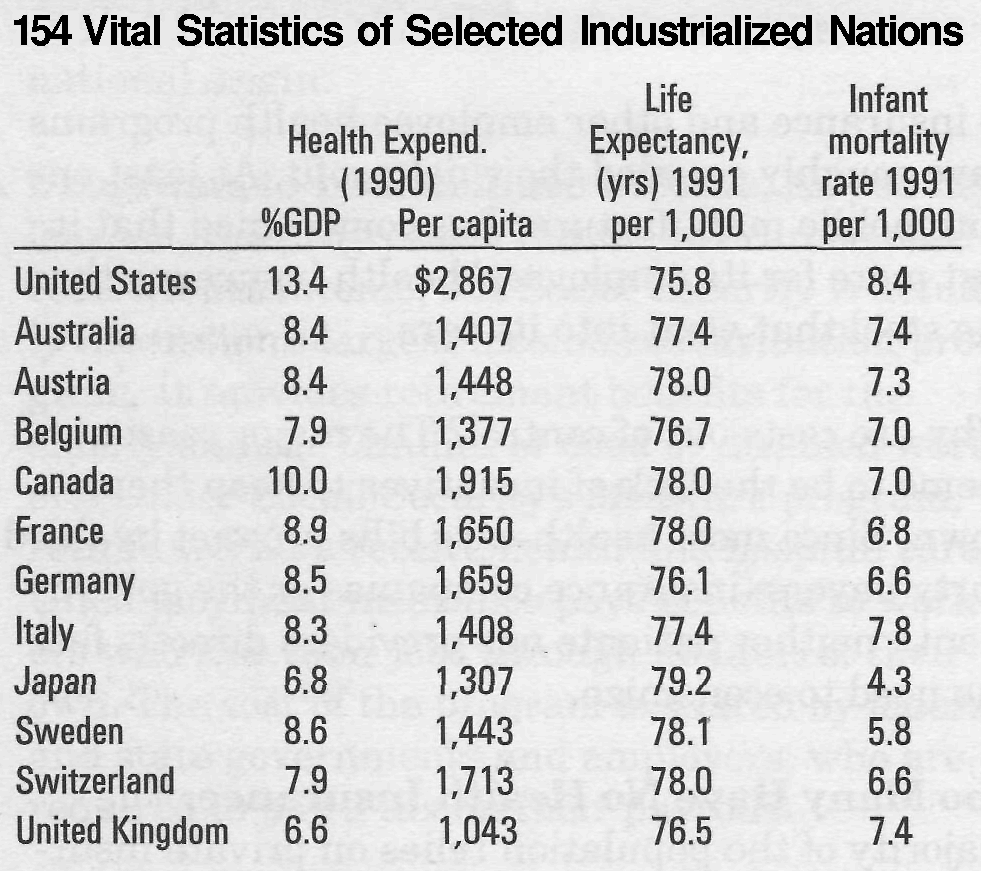
- •15.1. Urban Problems
- •15.2. What Can Be Done?
- •15.3. Poverty in America
- •15.4. Who are the Poor?
- •15.5. The Health-Care Crisis: An Overview
- •15.6. How Can America's Health-Care System Be Improved?
- •15.7. Farmers and their Problems
- •15.8. Economic Sources of the Farm Problem
- •15.9. The Global Connection
- •15.10. Federal Farm Aid
- •15.11. The 1990s and Beyond
- •15.12. Economic Growth and the Environment
- •15.13. Protecting the Environment
- •15.14. Air Pollution
- •15.15. Water Pollution
- •15.16. Land Pollution
- •15.17. The Economic Results of Regulation
- •15.18. The Twin Deficits
15.5. The Health-Care Crisis: An Overview
Many believe there is a health-care crisis in the United States characterized by soaring prices for routine care, inadequate treatment of illness, and a lack of medical insurance for many individuals and families.
Health-Care Costs Have Been Skyrocketing.
Health care has been taking an alarming share of the GDP in recent years. In 1960, the nation's health-care costs were $27 billion, or 5.3% of the GDP. In 1990 they were $666 billion, or 12.1% of the GDP. To put it another way, spending for health care in 1990 was double the outlay for defense, and four times more than U.S. farm production.
Private insurance companies pay about one-third of all health-care costs. Since most Americans obtain their health insurance through their employers, business has been especially hard hit by rising costs. In recent years, the contributions of U.S. companies to insurance and other employee health programs have roughly equaled their net profit. At least one automobile manufacturer has complained that it cost more for its employees' health insurance than the steel that went into its cars.
Why are costs out of control? The major reason seems to be the lack of incentives to keep them down. Since most health-care bills are met by third-party payers (insurance companies or the government), neither patients nor providers directly feel the need to economize.
Too Many Have No Health Insurance. The majority of the population relies on private insurance to pay all or part of its medical bills. Others look to government to pay their medical expenses.
Unfortunately, many individuals and families have no health insurance at all. Although estimates vary, a recent Presidential Commission calculated that there were 33 million, or about one out of every eight, Americans without any health insurance.
The very poor are likely to be covered by government programs such as Medicaid. Consequently, most of the uninsured are actually employed workers and their families. People with jobs go without insurance because their employers do not provide it; they cannot afford it, or choose not to buy it; or they do not qualify for any government programs.
Unfortunately, the numbers of uninsured workers have been growing.
• More and more people work for small firms that do not provide health insurance. Also, most part-time jobs do not provide health insurance.
• Rising costs have prompted many individuals and firms to abandon their insurance programs.
• Fiscal problems have caused the federal and many state governments to reduce Medicaid.
• Insurance companies refuse coverage to people they consider to be a poor health risk. About 2.5 million people fell into this category in 1990.
Disappointing Results. By some measures, American health care ranks among the poorest of the developed countries. Despite far higher per capita spending, Americans die younger and lose more of their babies than anyone else in the industrialized world. (See Table 15-4 below.)

